Revealing History Virtually
The Vesuvius Challenge award winners (credit: SWP Media)
It is not often someone can sit among a small group of attendees, at an elegant building in their hometown, and participate in a technological revolution revealing history hidden and thought lost for 2000 years. That is what happened at an event hosted by the Getty Villa in my former West Los Angeles neighborhood. The Villa is famous for it galleries, gardens, and currated displays of artifacts restored from Greco-Roman antiquity. It is an exquisite replica of an ancient Roman country house re-created from architectural details determined during previous excavations.
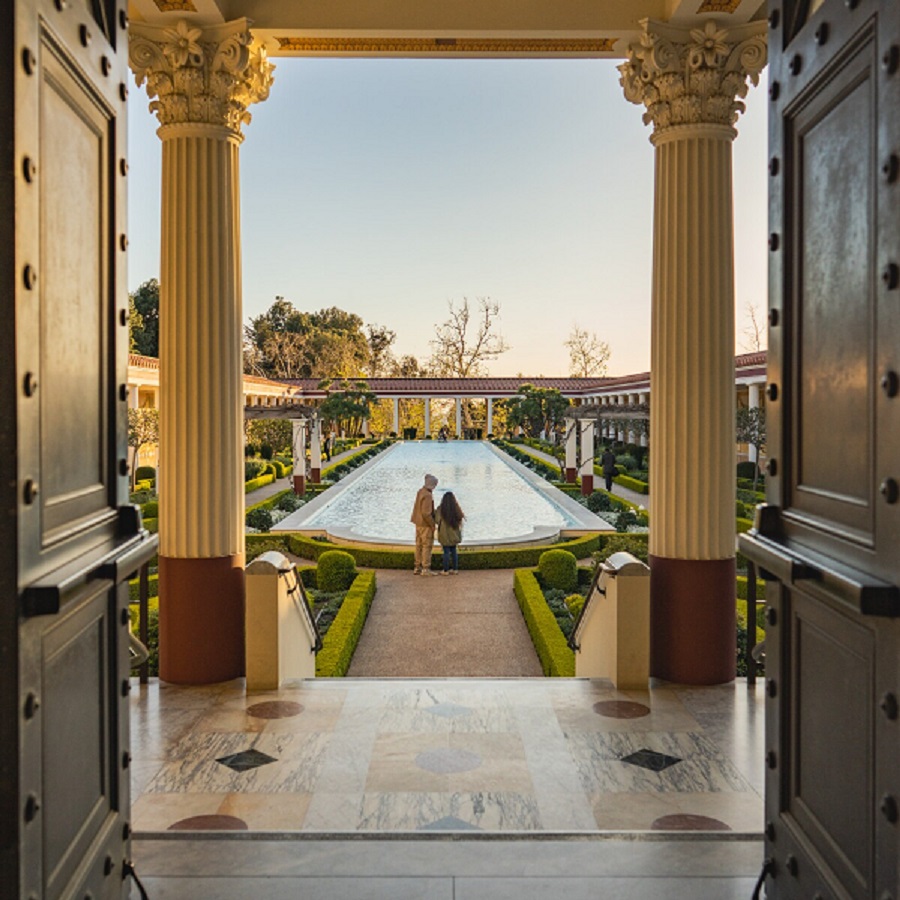
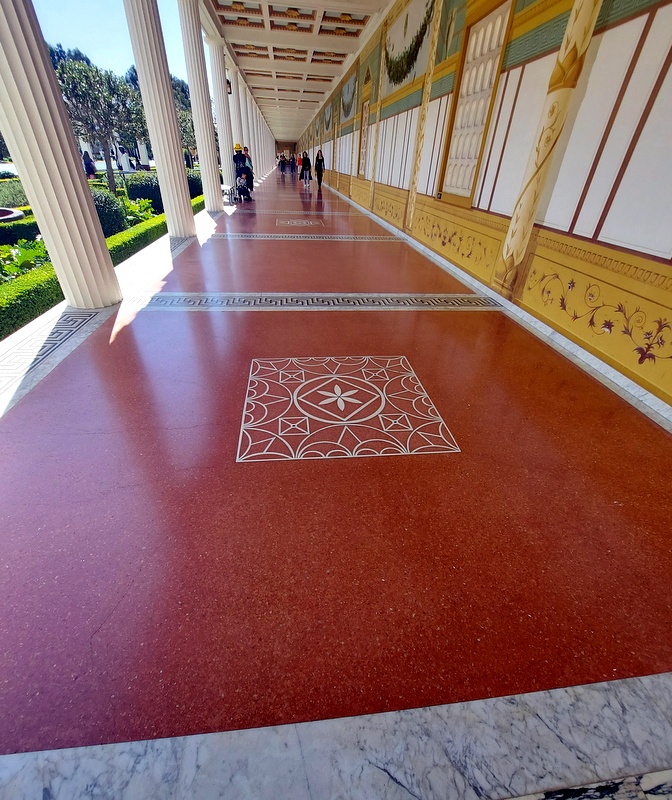
Getty Villa garden and pool (credit: Getty Villa) Getty Villa walkway (credit: Getty Villa/SWP Media)
At this event for 200 guests, the Getty played host to recognize the award recipients of The Vesuvius Challenge for their success to scan, unwrap, and decipher a lost text discovered during excavations in the ancient town of Herculaneum near Naples.
Some 1800 charred scrolls were unearthed from the lavish villa in the mid-18th Century afterwhich the building became known as the Villa dei Papyri. The seaside estate, thought to have been the home of Lucius Calpurnius Piso, the father-in-law of Julius Caesar, became encased by hot mud flowing down Mount Vesuvius when the volcano erupted in 79AD. The scrolls became carbonized, like pieces charcoal, in the oxygen-free environment of the super-heated mud. The hot, gooey, material hardened into 60 feet of tufa and the town, with everything in it, became a time capsule like 'bugs in amber' delivered from antiquity.
In typical, laid-back Southern California style, presenters offered insights on various components of this ground-breaking initiative. The Getty's curator of antiquities (Kenneth Lapatin) discussed the museum's long-standing efforts to preserve, restore, and display ancient Greek and Roman artifacts while a papyrologist from the University of Naples spoke to the history and importance of the Herculaneum scrolls. She illustrating some that were stored at the National Library in Naples. In one image, multiple scrolls, that had originally been stacked together on shelves, became carbonized as a single lump of 5 books. In full disclosure, 30 years earlier while in Naples, I had the opportunity to view the Herculaneum scrolls myself. They were stored on trays in a small, dingy office located in the basement of the library. The EU had been supporting a curator to help catalog the ancient documents. The Italian papyrologist was followed by an administrator with the Louvre Museum in Paris which contributed two of the ancient papyri that would be used during the experiments for the Challenge. He explained how excited the Museum was to participate in this historic, HiTec 'exploration of discovery'. 3D printed plastic duplicates of the Louvre scrolls, they were originally presented to Napoleon Bonaparte by the mayor of Naples, were shared around the audience.
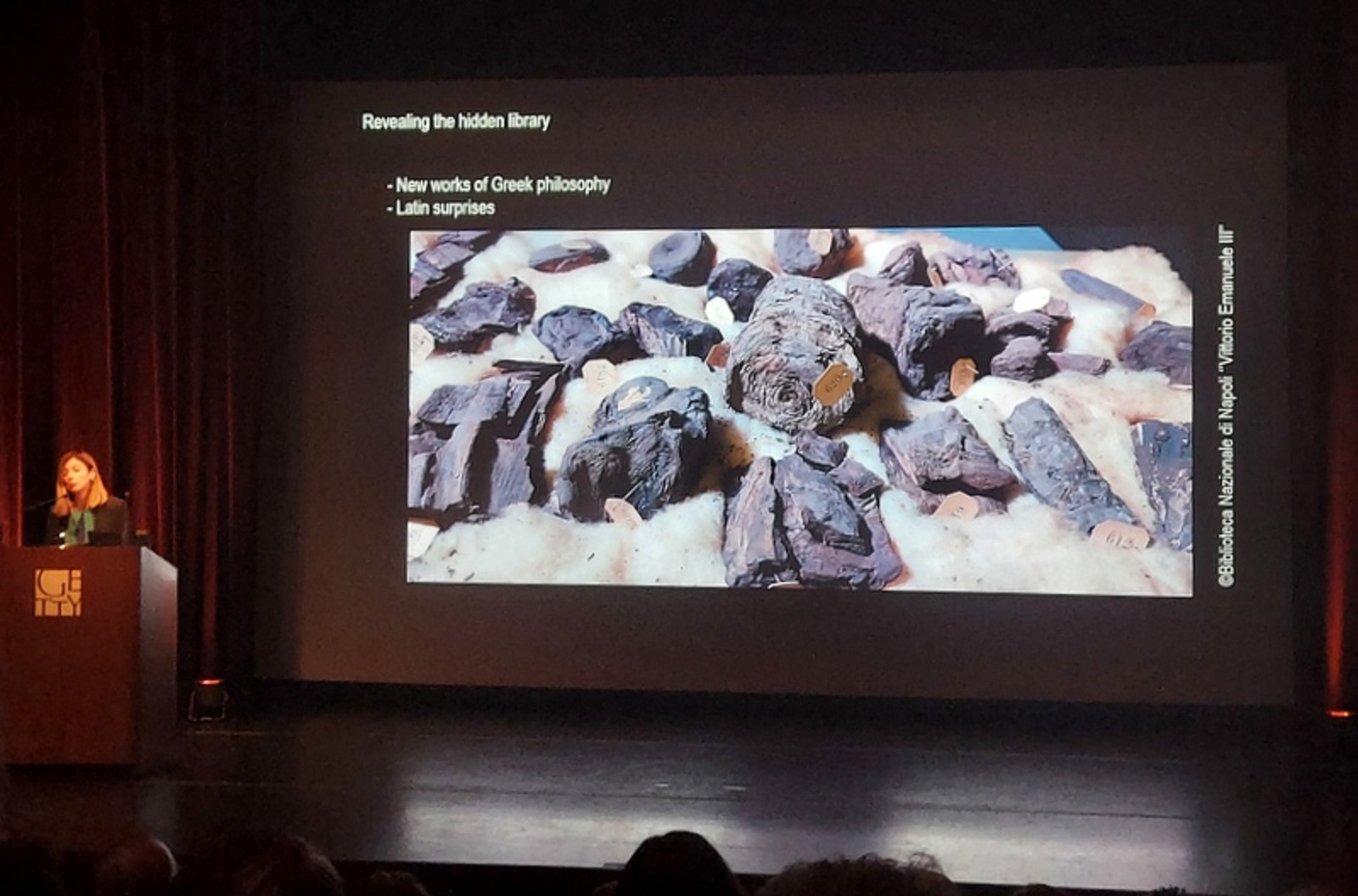
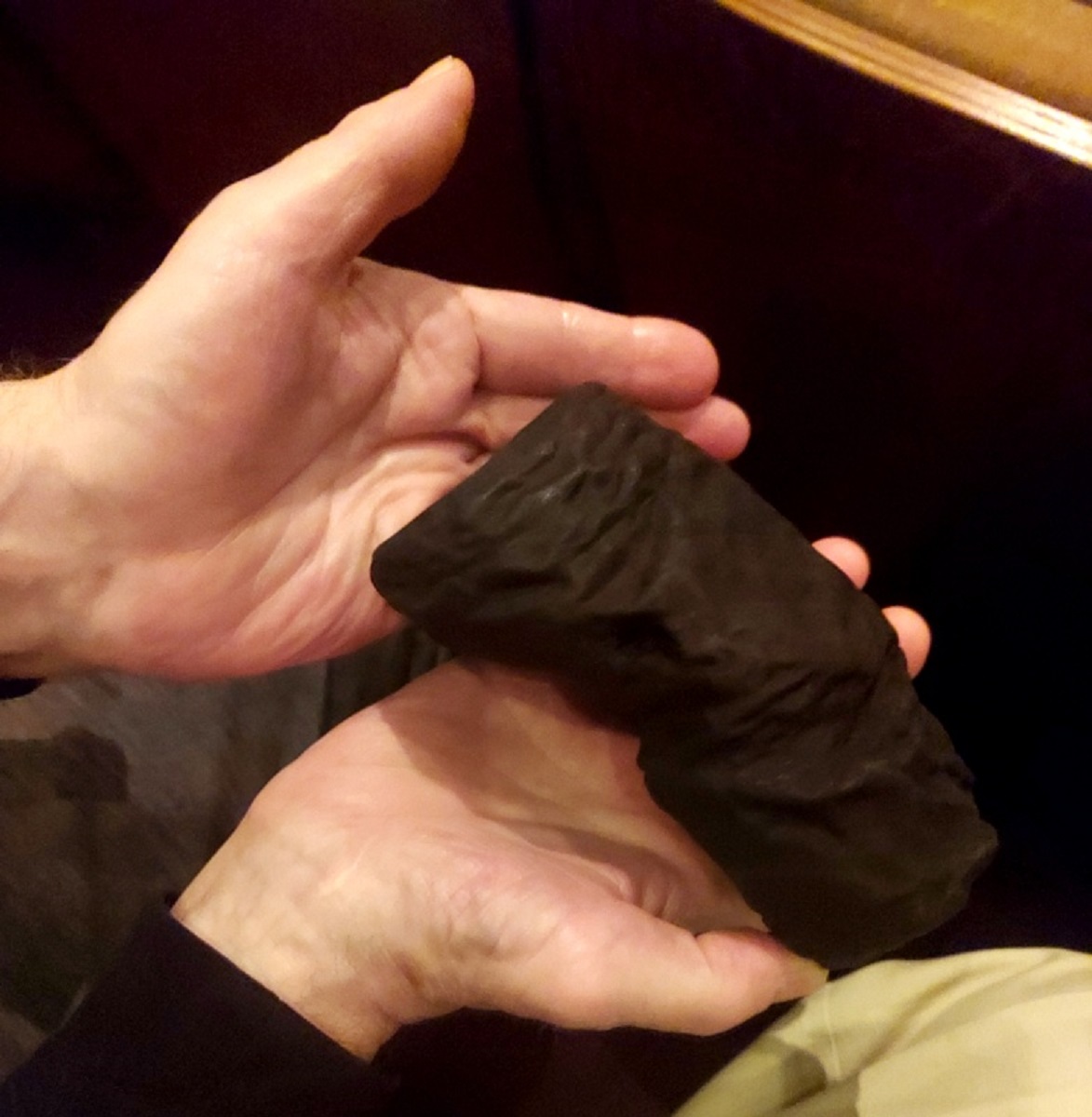
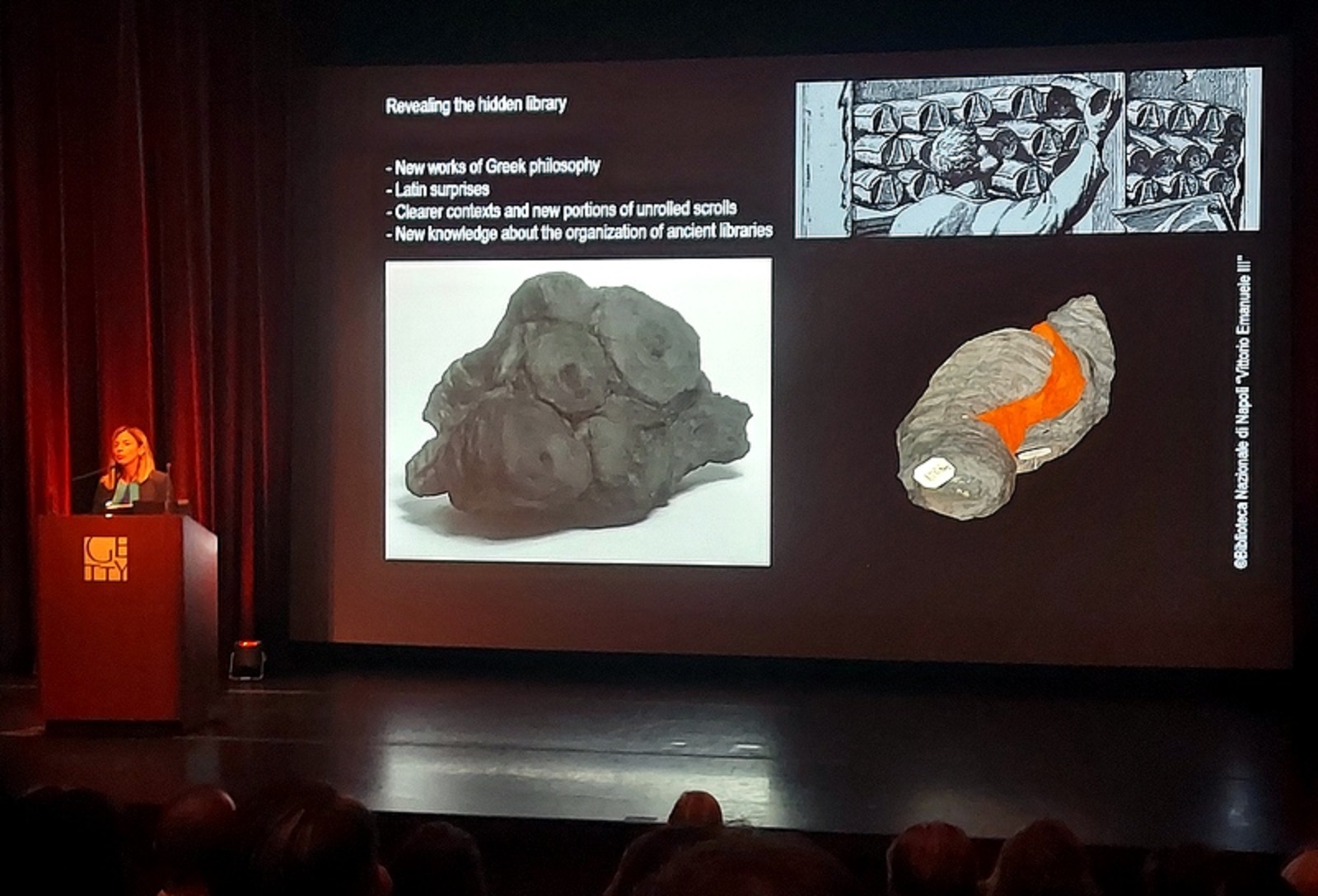
Herculaneum scrolls in Naples, 3D printed duplicate, and multiple scrolls carbonized together (Vesuvius Challenge/SWP Media)
Software engineer Brent Seales then presented the work of the University of Kentucky's digital restoration initiative and gave a humorous telling of their involvement in the Challenge. Seales and his associates combined Big Data, micro-CT scans using computational power sounding as if it required the capacity of a super-computer's server farm. This multi-disciplinary analysis of the carbonized relics also required information from chemistry, physics, and computer science to provide additional contextual details about the scroll. X-ray tomography, the word derived from the ancient Greek tomos to slice or section and grapho to describe, required a synchrotron particle accelerator to obtain full scans of the charred books. A complete high-resolution visualiztion was then produced from the first Louvre scroll. The Kentucky group had previously developed a method to virtually 'unwrap' a random bit of papyrus that was used to help discriminate between the carbonized plant fibers in the 'paper' and the ink used to write Greek letters contained on the fragment. This massive data set, and the 'unwrapped' bit, was then used by the Challenge participants to train a machine learning (A.I.) program to try and reveal words hidden within the charred fragment. The first Geek letters that appeared turned spelled the word purple, an important color in antiquity.
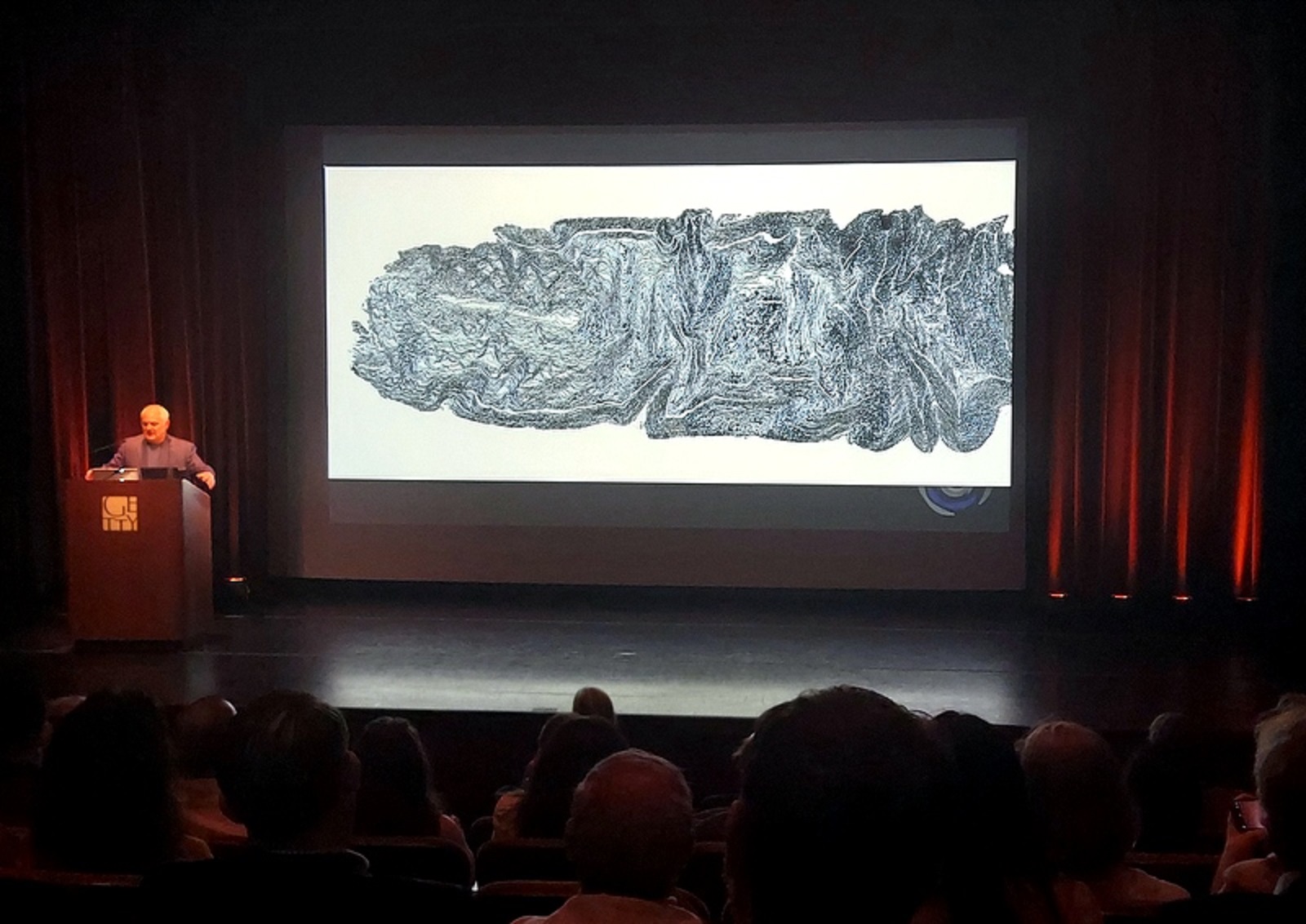
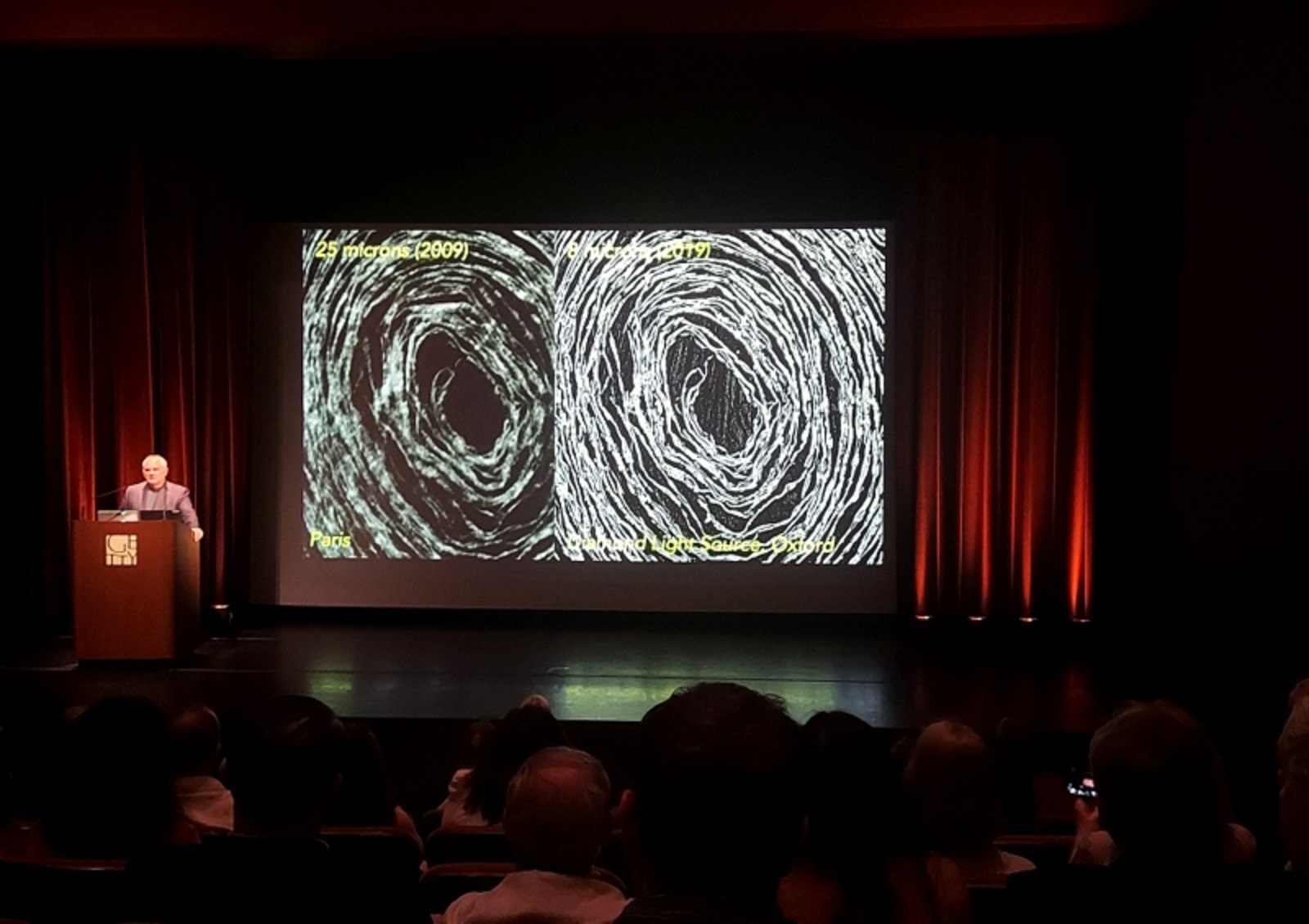
Herculaneum scroll, exterior & interior, after cyclotron scans to create an X-ray tomograph (credit: Vesuvius Challenge/SWP Media)
Lastly, Nat Friedman, a technology entrepreneur who helped to organize the Challenge, illustrated how complicated it became to coordinate all these moving components. Friedman developed guidelines for all participants to follow that included: incentives for making incremental progress; all efforts must be 'open sourced' and shared with others; an 'intensify of purpose' was required to bring out the best in all collaborators; and prestigious results were required to win an award. Nothing simple there!
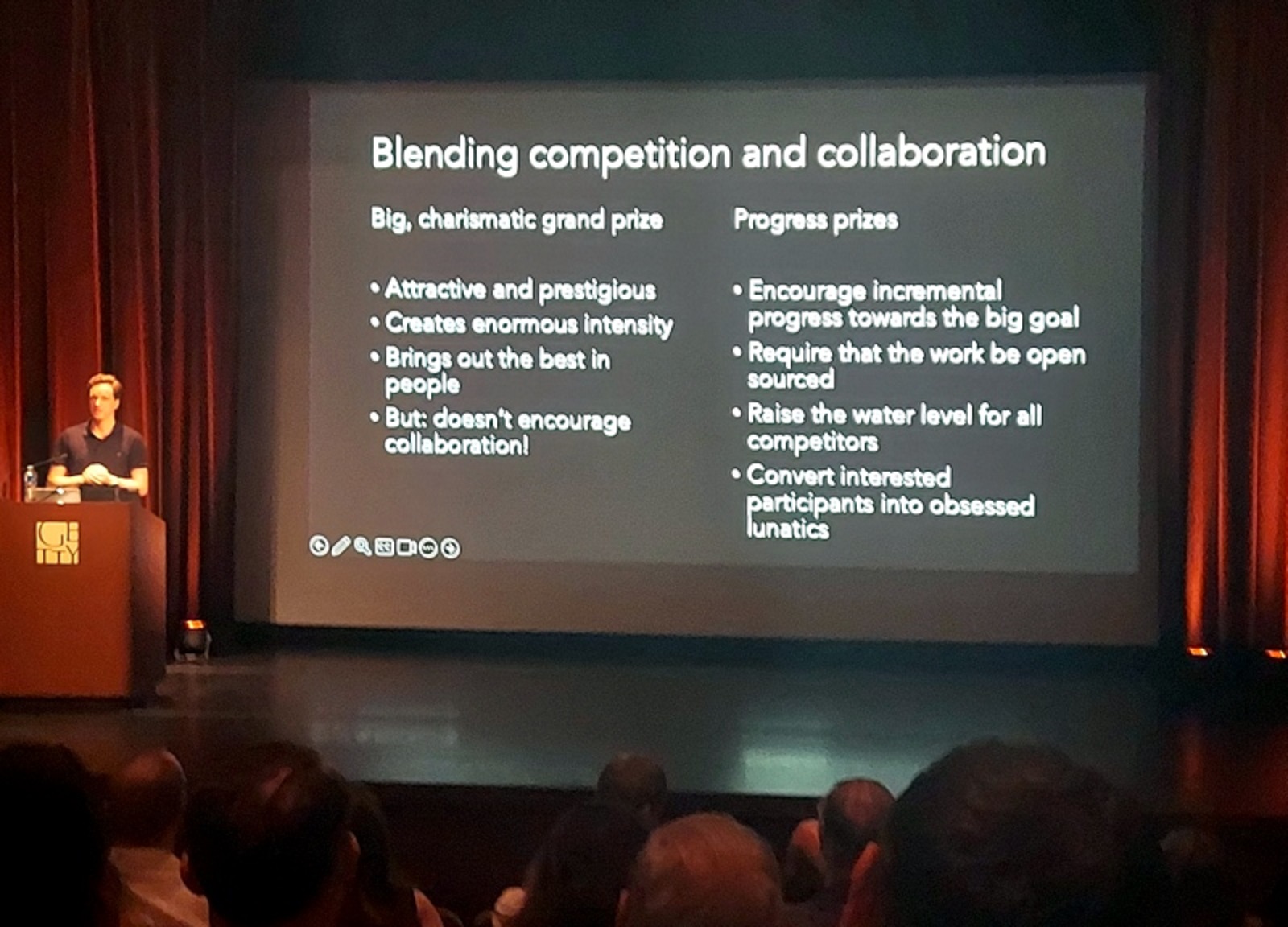
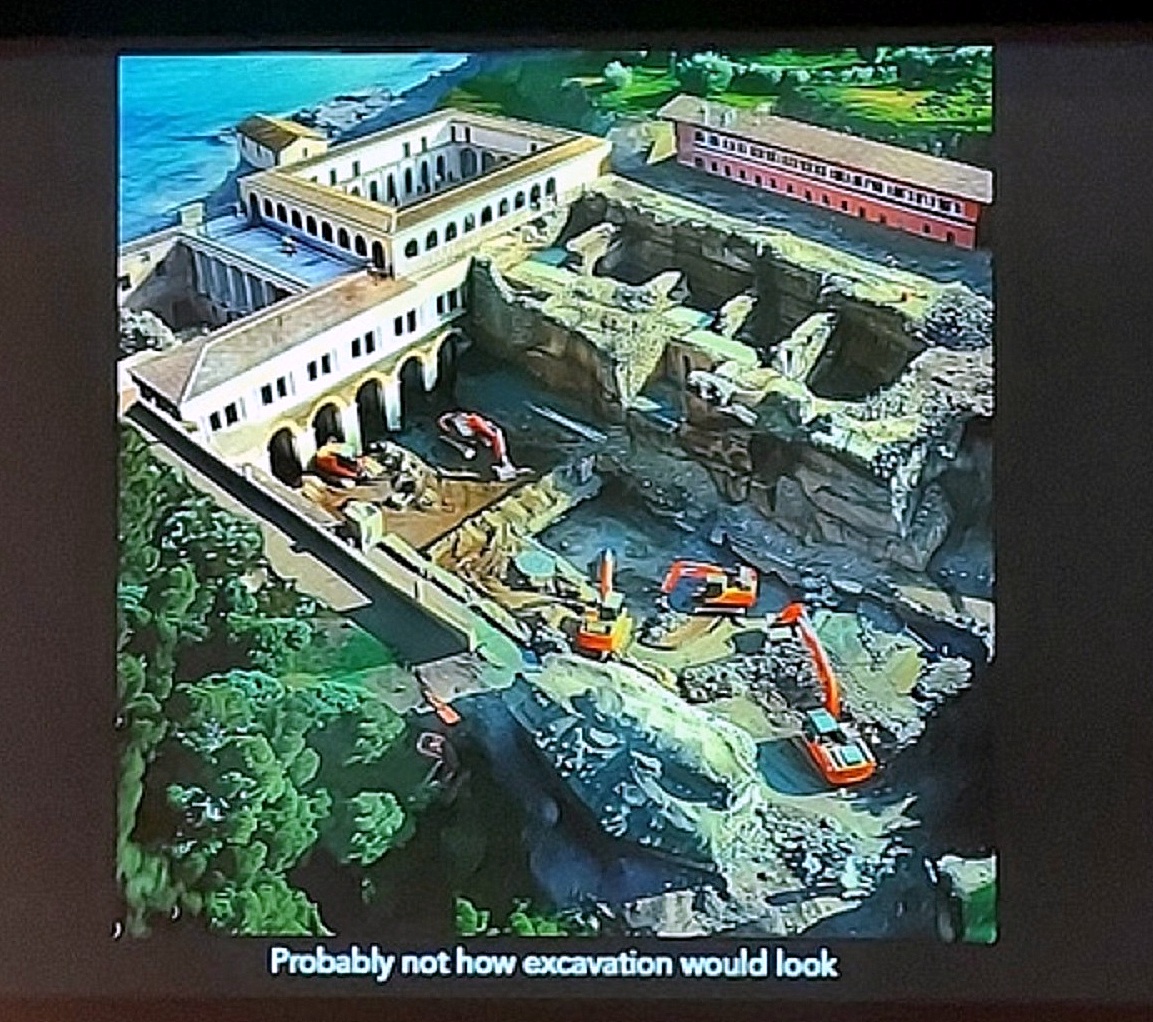
Competition, collaboration for success, and future excavations needed at Herculaneum (credit: Vesuvius Challenge/SWP Media)
Like a gigantic calliope with multiple peddles and constantly moving parts, the efforts to decipher a scroll that looked more like a BBQ briquette required all these technological tools, international legal agreements, dispersed interactions, and a certain amount of funding to conduct experiments across two continents. Friedman added that all these Challenge efforts had to be accomplished in less than a year. The required goal was to decifer 140 characters of Greek text if participants were to win the award. The 3 winners decifered more than 2000 characters in their moumental achievement.
Challenges are meant to be daunting but The Vesuvius Challenge was a technological over-the-moon shot with limited chances of success. That it succeeded, and with even greater results than anyone ever expected, was remarkable and thrilling to witness in person.
It felt like being a witness to a paradigm shift in science and technology being presented at the Getty. The results revealed by this international venture has launched a revolution in 'real time' to recover more lost history, ideas, and culture stored within all the remaining charred documents. Unwrapping and reading more than a 1000+ scrolls is now underway. Likewise, only 25% of the classic Herculaneum manor has so far been excavated and expectations are high that the villa's wealthy owner likely maintained a far more extensive library in another still buried space in the building. Imagine what stories those scrolls will tell when that room is finally opened! WHB